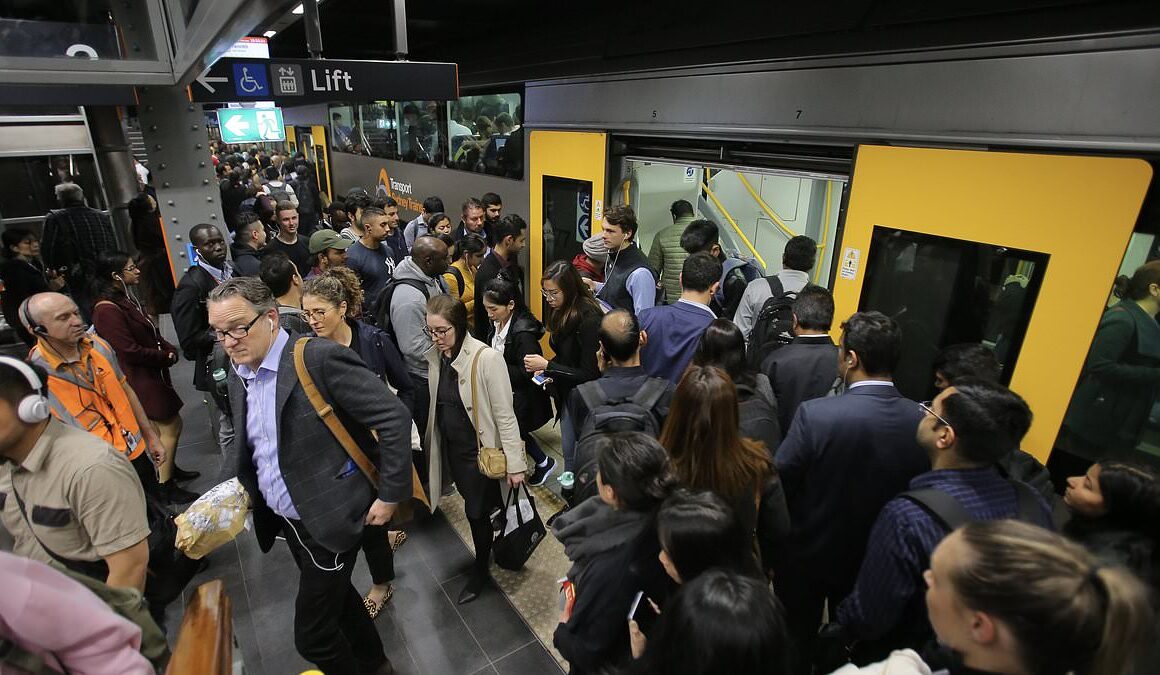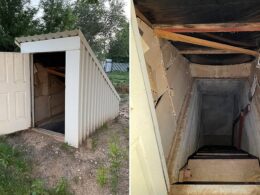Anthony Albanese‘s vow to halve immigration during this financial year is looking shaky – and could see Labor accused of breaking an election promise.
Just three months ago, the Prime Minister promised Australia’s net overseas intake would be slashed to just 250,000 in 2024-25.
This was after a record 547,300 foreigners moved to Australia in 2023, the most ever for a calendar year, as 27,000 New Zealanders relocated to Australia.
Australia’s immigration intake is hardly slowing down.
In the year to May, 482,450 migrants moved to Australia, calling into question Treasury’s May Budget forecast of 260,000 arrivals during this financial year.
Dr Kevin You, a senior fellow at the conservative Institute of Public Affairs think tank, said the latest Australian Bureau of Statistics data illustrated Labor would be unlikely to deliver on its promise to halve immigration.
‘The latest ABS data confirms the federal government is simply not interested in delivering on its promise to reduce Australia’s record migration surge, and will dramatically overshoot its net overseas migration commitment,’ he said.
‘The Prime Minister’s commitment to halve the annual migration intake, made just two months ago, is not worth the paper it is written on, and is yet another broken promise from a government which is making it harder for mainstream Australians to get ahead.’

Anthony Albanese’s vow to halve immigration during this financial year is looking shaky
A spokeswoman for Mr Albanese said Treasury figures showed immigration was on track to slow down, although new official data for July won’t be released until September.
The figures for 2024 won’t be known until February.
Migration Watch Australia founder Jordan Knight is campaigning for a two-year immigration freeze.
He pointed out that both major parties had favoured high immigration during the past two decades, which had made houses unaffordable for middle and average-income workers.
‘Australia’s political class are gaslighting young people, telling them that the only way out is more government control and more migrants,’ he said.
‘Wrong. The solution is simple: less immigration, and a political class that puts Australians first, not last.’
The number of Kiwis moving to Australia is now at the highest level since 2013, for a net gain of 27,000.
This occurred as more than 44,500 Kiwis sought to leave New Zealand as it headed for a recession, compared with 17,500 Australians heading the other way.
Australia has also been in a per capita recession for the past year, where output for every Australian has gone backwards.
The IPA calculated every Australia was $7,848 a year worse off as a result of immigration hitting record-high levels after Australia reopened in 2021 following almost two years of Covid border closures.
‘Never before has GDP per capita declined for more than a year, now totalling five quarters,’ Dr You said.
‘Today, Australians are, on an individual basis, in recession and getting left further behind when the nation’s cost of living crisis is already acute.’

Just three months ago, the Prime Minister promised Australia’s net overseas intake would be slashed to just 250,000 in 2024-25 (pictured are Sydney train commuters at Town Hall)

Dr Kevin You, a senior fellow at the conservative Institute of Public Affairs think tank, said the latest Australian Bureau of Statistics data illustrated Labor would be unlikely to deliver on its promise to halve immigration
Australia’s headline inflation rate of 4 per cent in May was high by world standards, with population pressures leading to a 7.4 per cent annual surge in rents.
In April, Mr Albanese told Melbourne 3AW radio broadcaster Tim Elliott his government aimed to halve net overseas migration levels, after being pushed on a figure.
‘Well, we’re not going to just pluck a figure out of the sky, but what we are projecting is that the NOM, the net overseas migration, is projected to come down to 250,000 in the coming financial year in 2024-25,’ he said.
Opposition Leader Peter Dutton in his May Budget reply speech promised to reduce the permanent intake to 140,000, down from 185,000.
But overall net overseas migration, which covers skilled migrants and international students, could still be above 200,000 – or double the levels of the late 1990s.








